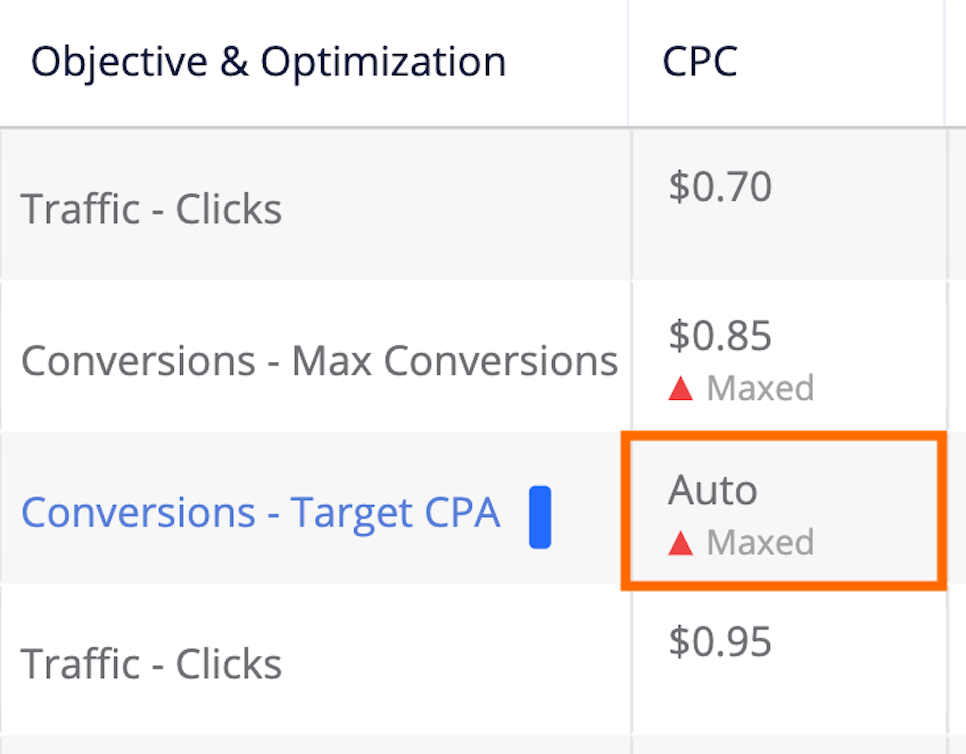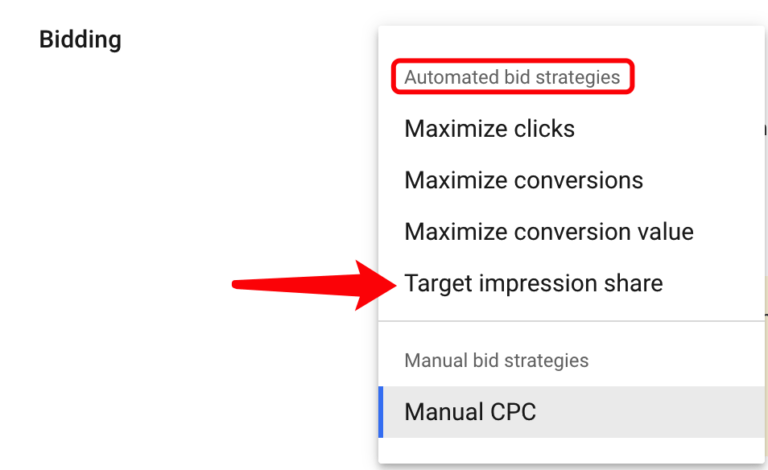Are you unsure of which bidding strategy to use? Should you opt for a manual, automated, or strategic plan? It’s a crucial choice that will affect the outcome of your campaign. You can set bids at different levels when using manual bidding, such as campaign, ad group, and keyword levels.
Because bid strategies can only be applied at the campaign level when using automated bidding, all ad groups in the campaign will use the same bid strategy. You can use distinct tactics for various campaigns. Furthermore, you can apply the campaign strategy to multiple campaigns by setting it at the account level.
Table of Contents
In this article, we will talk about the various kinds of bidding strategies. Certain ones might perform better for your campaigns than others. It’s critical to comprehend every tactic in order to choose the ones that work best for you.
Introducing Automated Bidding in Google Ads
The goal of automated bidding in Google AdWords is to optimize the campaign’s performance according to your predetermined objectives. With automated bidding, Google automatically calculates bid amounts based on the likelihood of a click or conversion. They do this by analyzing information about the user’s device, operating system, location, demographics, and time of day when they search.
Every single one of Google’s goal-driven, automated bid strategies is a portfolio bid strategy, which combines several campaigns, ad groups, and keywords. This implies that marketers can use the approach they have selected for each of their campaigns, ad groups, and keywords. Standard strategies offer specific ad strategies that marketers can apply to a single campaign.
Automated bidding seeks to address two issues that marketers frequently encounter with their campaigns:
- Whether or not their offers are sufficient to attract qualified purchasers.
- Whether or not their bids are excessively high and might attract the attention of non-buyers.
Bids for keywords and ad groups can be automatically updated, eliminating the need for manual bid updates. The system automatically sets a unique bid for each auction, ensuring a unique bid for each auction. Automated bid strategies analyze past data and learn over time, using performance to inform future bids.
This performance is another indication of Google’s shift towards machine learning, which is also evident in their Universal App Campaigns. Although machine learning facilitates the automation of the bidding process, there are issues with the system.
For instance, this bidding method cannot account for flash sales, weather, media coverage, and recent events. We may need to manually set bids at this point. Finally, depending on the bid strategy you are employing, automated bids are available for both Search and Display ads.
Introducing Smart Bidding
Some people might mistakenly believe that automated bidding and smart bidding are synonymous. However, Smart Bidding is actually a category of bidding that exclusively includes strategies that are based on conversions.
Utilizing machine learning, Smart Bidding tracks and evaluates data signals from each search and click to optimize conversion outcomes. Google will use this data to decide whether to raise or lower bids in response to its assessment of the likelihood that a click will result in a conversion. For example, if a searcher is more likely to make a purchase, they will place a higher bid.
Are automatic bidding and smart bidding the same thing?
Despite their frequent synonymous use, “smart bidding” and “automated bidding” are not synonymous. “Smart bidding” refers only to Google’s automated bidding strategies that utilize “auction-time bidding,” or optimize for conversion or conversion value in each and every auction. Among them are:
- Increased CPC
- Increase Conversions to the Maximum
- Optimize Conversion Value
- Set CPA
- ROAS targets
As a result, not all automated bidding strategies are Smart Bidding strategies, even though they are all automated.
Top 7 types of automated bidding strategy to use
Google AdWords currently offers seven different kinds of automated bid strategies. Before we get to the main advantages of automated bidding, let’s go over each of them in a little more detail.
1. Target CPA (Cost Per Acquisition)
Optimizing your ad bids no longer requires guesswork, thanks to this effective automated bidding technique.

Target CPA allows you to auto-set bids to optimize conversions for your campaigns at the CPA you specify. Note that certain conversions might cost less or more than the amount you had hoped for.
Finding the sweet spot—where you receive the highest conversion rate at a cost that is in line with your target CPA—is the aim.
2. Maximize Clicks
The Maximize Clicks strategy’s goal is to maximize click volume while staying within your budget. Google AdWords automatically adjusts bids to increase the likelihood of more people clicking on your ads.

The Maximize Clicks bidding strategy is appropriate if increasing brand exposure or website traffic is your primary objective. It is helpful if you want to maximize the number of clicks on your advertisements but have a tight budget.
3. Target Impression Share
Target impression share automatically adjusts your bids to maximize the likelihood that your ads will show up in the section of the search page that you choose.

This strategy simplifies the bidding procedure. It makes it possible for Google Ads to dynamically modify your bids in order to preserve the targeted impression share, which will enable you to more effectively meet your visibility goals.
4. Target ROAS (Return on Ad Spend)
When you use the Target ROAS strategy, Google AdWords optimizes your bids to maximize revenue based on the return on ad spend (ROAS) goal you set. It modifies bids for various auction opportunities using sophisticated machine-learning algorithms.

With Target ROAS, you can establish a target return on ad spend instead of concentrating on a particular cost per conversion.
To calculate ROAS, divide the revenue from your advertisements by the amount you paid for them. Thus, for instance, you would set your target ROAS at 4.0 in order to achieve a 400% ROAS.
5. Enhanced CPC
A bid strategy called Enhanced CPC (ECPC) combines automated and manual CPC bidding. It starts with your manual CPC bids and has the ability to automatically modify them to get better results.

For companies looking to increase conversions while maintaining control over their keyword bids, ECPC is a viable option. Additionally, it is a beneficial choice for companies that have never used automated bidding before and would like to give it a try before committing to a more involved plan.
6. Maximize Conversions
The goal of this strategy is to drive as many conversions as possible while staying within your budget. In order to display your ads in front of the appropriate people and maximize conversions, Google AdWords automatically sets bids.

When you don’t have enough time or resources to manually optimize your bids for every keyword or ad group, this is the best bidding strategy to employ. You can save time by using Maximize Conversions, which allows Google AdWords to optimize your bids in order to produce more valuable conversions.
7. Maximize Conversion Value
Google Ads offers Maximum Conversion Value bidding, an advanced automated bidding strategy that goes beyond merely boosting conversion volume.

With this approach, the emphasis switches to optimizing the overall value that is produced by your conversions, taking into consideration variables like order size, purchase value, and customer lifetime value.
Enough historical data and precise conversion tracking are necessary for the system to be able to make intelligent bidding decisions. Adopting Maximize Conversion Value gives Google Ads the ability to intelligently optimize your bids and increase conversion value for your company.
Seven Core Benefits of Google Ads Automated Bidding
With Google Ads automated bidding, businesses of all sizes can increase conversions, save time, and return on ad spend. Let’s look at the top seven benefits of using Google AdWords automated bidding:
1. Allows You to Optimize Ads Depending on Your Objectives
With Google AdWords, automated bidding enables you to match your campaign goals with particular bid strategies, like reaching a target return on ad spend (ROAS) or optimizing conversions. You can use it to optimize your campaigns to achieve the results and goals you have in mind.

Google’s automated bidding system makes real-time bid adjustments based on data analysis and goal analysis. To calculate the best bid for each auction, it takes into account elements such as user intent, competition, keyword relevancy, and ad quality.
The system continuously improves the bidding strategy as it collects more information and gains insight from the campaign’s performance. In order to maximize performance and accomplish the intended objectives, it finds areas for improvement, pinpoints underperforming keywords or placements, and modifies bids appropriately.
2. Cuts Down on Guesswork
The chance of error involved in manual bidding is decreased by automated bidding. It removes the chance of bid adjustments, erroneous calculations, or lost opportunities as a result of human error.
When using automated bidding, machine learning and sophisticated algorithms are used to make data-driven bid decisions. As a result, there is less need for manual guesswork and human error because the system optimizes bids by taking into account a number of variables and historical performance data.
Furthermore, automated bidding continuously improves its bidding strategy over time by learning from and adjusting to real-time campaign performance. By ensuring that bidding decisions are founded on up-to-date information, this dynamic and adaptive approach lessens the need for speculation and improves the precision and effectiveness of bid optimizations.
Automated bidding reduces uncertainty and increases the likelihood of accomplishing campaign objectives by introducing a scientific and data-driven approach to campaign management.
3. Boosts Efficiency
By automatically modifying bids in real time, automated bidding simplifies the bidding procedure. It spares you the trouble of having to manually check and modify bids for certain keywords or ad groups. You can free up time and resources to concentrate on other important aspects of your marketing campaigns by using automation.
Automated bidding is an effective way to handle bids for large campaigns or several campaigns at once. It ensures effective resource allocation by eliminating the need for manual adjustments and optimizing bids in accordance with the auction’s specifics.
Marketers can devote more time and resources to other crucial duties like strategy development, creative optimization, and campaign analysis by automating bid management. This enables them to contribute more significantly to the campaign’s overall success.
4. Utilizes Modeling of Query Level Performance
Utilizing query-level performance modeling, which examines past search query performance to more accurately optimize bids, is another key advantage of Google Ads’ automated bidding. This allows you to target specific keywords that are more likely to drive conversions or help you achieve your campaign goals, as well as gather valuable traffic.

Automated bidding modifies bids to maximize performance based on certain search query performance data. It assigns bids based on the queries that are most likely to result in valuable actions, like conversions or engagements.
5. Conserves Time
Automating the bidding process saves time on manual bid adjustments. It can now optimize bids based on performance signals and real-time data, saving you the trouble of continuously monitoring and adjusting the system.
Rather than spending a lot of time and money tracking and modifying bids, you can rely on the automated system to do these jobs effectively.
This frees you up to concentrate on making strategic decisions, like improving the copy of your ads, looking into new targeting possibilities, or doing a more thorough analysis of the campaign’s performance.
6. Provides More Budget Control
You can allocate your budget more wisely when you use automated bidding. To make sure your search campaigns stay within your budget while maximizing bid performance, you can set maximum limits or constraints. This helps you make the most of your advertising budget and achieve your desired outcomes.
It provides information on pacing, ad performance, and spending trends to ensure the wise use of your budget over time. To stay within your allotted budget while maximizing results, you can monitor how you’re using it and make necessary adjustments to your bid strategies.
Automated bidding reduces the possibility of going over budget or overspending by optimizing bids in accordance with performance indicators and predetermined targets.
It lessens the likelihood of wasteful spending by tracking high-value opportunities and dynamically modifying bids. It ensures the funding of the most significant portions of your budget, thereby enhancing your overall return on investment.
7. Achieves Outcomes Quickly
By utilizing machine learning algorithms and real-time data, automated bidding can produce results quickly. Compared to manual bidding, it enables faster bid optimizations and adjustments, allowing you to see the effects of bid changes on your campaign’s performance more quickly.
Thanks to automated bidding, campaigns can quickly adjust to shifts in the market, the behavior of their target audience, and the competitive landscape, which leads to quicker optimizations and better performance.
Automated bidding continuously analyzes campaign data using machine learning to spot trends and optimize bid strategies for prompt and effective outcomes.
Advertisers are able to save time and accelerate business growth by focusing on strategic decision-making instead of tedious bid management.
Tips to select the right bidding strategy
Know your objectives
The first step in choosing an automated bidding strategy is to ascertain the objectives of your campaign. Which goals are you trying to achieve? Are you aiming to increase brand awareness, increase sales, or increase website visits? Your goal shapes your bid strategy. For example, you may want to think about a strategy that maximizes clicks if your goal is to increase sales, or you may want to consider a strategy that optimizes for return on ad spend (ROAS).
Examine prior results
Examine your campaign’s past results. Examine data such as cost per conversion, click-through rates, and conversion rates. Determine which tactics have proven effective in the past. This analysis can offer insightful information about the bidding strategies that appeal to your target audience and produce favorable outcomes.
Calculate conversions accurately

For automated bidding to work, accurate data is essential. Ensure that you have properly configured your conversion tracking. If your goal is to track purchases, ensure that you accurately tally each sale. An accurate tracking system guarantees the bidding system has the data it needs to make informed decisions.
Recognize rivalry
Think about how competitive your industry is. It may be harder to stand out if you operate in a highly competitive market. In these situations, you may choose to use more aggressive bidding techniques in an effort to secure priceless ad placements and clicks.
Test and acquire knowledge
Trial and error is the key. Set aside some cash to experiment with various bidding tactics. Run campaigns in parallel with various approaches, then evaluate how well they perform. Monitor key performance indicators such as revenue, cost, and conversions. Over time, you’ll learn more about which approach best fits your objectives and target audience.
Keep in mind that choosing the best bid strategy is a continuous process. Both market conditions and campaigns are subject to change. Review the performance of your campaign on a regular basis, make necessary adjustments to your plan, and keep up with the most recent changes to Google Ads Automated Bidding options.
Closing Thoughts
You can leverage Google’s automated bidding to optimize for more clicks, conversions, or other desired outcomes, all while saving significant time compared to manual bid adjustments. However, it’s important to note that automated bidding comes with its own set of limitations. The extensive control offered by manual bidding isn’t available with automated strategies, and having historical data is crucial before initiating the bidding process.
By partnering with a ROI-Driven Google Ads Agency, you can maximize the effectiveness of your entire digital ad campaign strategy, including both your Google search and display ads.

Supriti is a seasoned Content Writer at SwiftPropel, boasting over 8 years of experience in SEO content writing. Her expertise lies in crafting compelling, search-engine-optimized content that not only engages readers but also ranks highly in search results. At SwiftPropel, Supriti combines her passion for storytelling with a deep understanding of SEO strategies to deliver content that drives traffic and converts leads.

